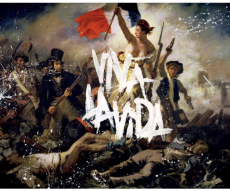
Baroque Pop is a subgenre of the fusion of genres, ‘Rock Pop.’ It derived from both British and US artists who incorporated features of Classical music into Rock and Roll. The genre reached the height of its popularity at the end of the 1960’s. At this time, many upcoming bands such as the Rollin Stones, the Beach Boys and the Beatles were using elements of Baroque Pop in their work. With the increasing popularity of disco, hard rock and punk rock in the 1970’s, Baroque Pop lost some of its mainstream appeal. However, since the 1990’s it has had a small revival, with musicians such as Regina Spektor and Belle and Sebastian using stylistic features of the genre in their music.
Within Classical music, Baroque describes the time period of 1600-1750. It encompasses the artistic style of the time, including, music, art and literature. The style was ostentatious, very lavish, often portraying a sense of ‘exaggerated movement,’ so as to evoke drama and tension. Music of the time aimed to use phrases with a sense of equilibrium; a clear, pure type of music, featuring orchestras, not dissimilar of contemporary orchestras.
Similar to Prog Rock, Baroque Pop was an attempt to create a more ‘mature’ and respected genre. However, it does typically stick to a more generic formula than Prog Rock, lasting around three minutes, and using typical lyrical themes, rather than using more experimental concepts like Prog rock. Although, the instrumentation of Baroque Pop is what makes it so interesting as a genre. We see a revival of instruments that seem antiquated to us; the Clavichord, harpsichord, and violins, cellos, harps, French Horns, among others, that are not usually found within the pop genre.

With such rich orchestration, the genre can include much more multi-faceted songs; multiple harmonies and layered melodies certainly serve to make the genre more sophisticated and diverse in its nature. Equally, the overall tone of Baroque Pop distinguishes it dramatically from the standard Pop genre; it is quite sombre and ‘melancholic,’ which juxtaposes the typical upbeat, feel-good Pop sound.
We still see Baroque Pop today, even in mainstream charts. For example, ‘Viva la Vida,’ by Coldplay is an excellent illustration of this. Unlike most popular songs, it begins and is entirely focused around a lush staccato string section that gradually builds from solo strings into a whole section of strings, not unreminiscent of the Baroque composer Vivaldi’s string compositions.
Chamber Pop grew out of the subgenre Baroque Pop itself in the 1990’s. In many ways it was as a retaliation to the popular music of the time which was mostly Grunge and alternative rock, which was criticised by some due to its nature of being in low-fidelity. People once again desired the smooth elegance of Baroque Pop instead of the harsh sound of the alternative rock. Dense and richly orchestration string and horn sections featured prominently within Chamber Pop.
In conclusion, I believe Baroque Pop to be a particularly successful genre as we continue to see its influence seeping into today’s music, with more and more artists including a wider orchestration for their works, with violins, cellos flutes and horns just to name a few, being used to enhance the sound. In our current musical climate, this can only be a good thing, as we have slipped into a time with more simplistic compositions, so to have a revival of this genre can only be a positive.
Image1: https://www.thinglink.com/scene/502274752497319937
Image2: https://thingsthatmadeanimpression.wordpress.com/2012/10/14/viva-la-vida-released-by-coldplay/

0 Comment:
Be the first one to comment on this article.